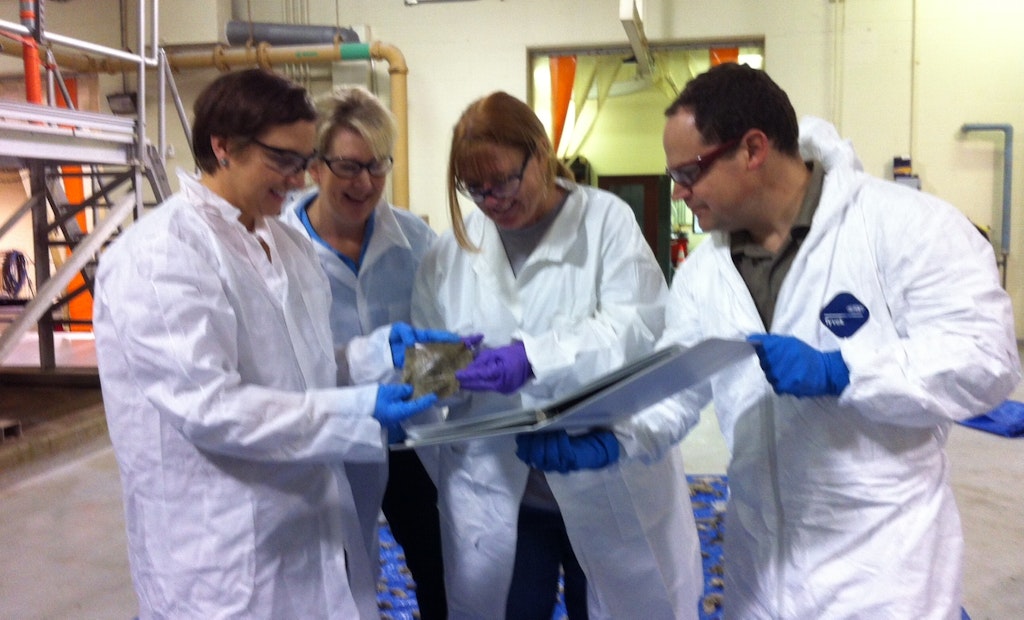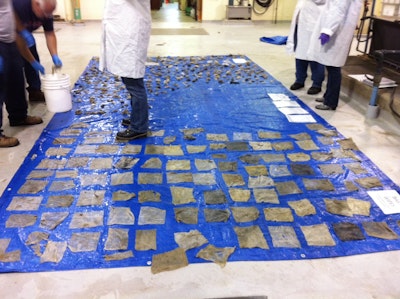
Interested in Infrastructure?
Get Infrastructure articles, news and videos right in your inbox! Sign up now.
Infrastructure + Get AlertsIn a historic partnership, the Maine WasteWater Control Association and the Association of Nonwoven Fabrics Industry recently launched a pilot project designed to educate the public about the proper disposal of baby wipes. The collaboration comes after years of discussion between the two entities — and the entire clean-water industry — about inconsistent product labeling of flushable wipes that contribute to overwhelmed municipal sewer systems, septic system troubles, backups in private plumbing and increased loading on headworks at wastewater treatment plants.
“It took us two years to find a campaign message that would be meaningful,” says Aubrey Strause, president of the MWWCA. “Whatever we did, we had to find a balance. It had to be a positive message. We didn’t want to tell consumers not to use baby wipes for non-baby use. On the other hand, we wanted to address products that are really a problem when they’re flushed.”
The pilot campaign, which will focus on the area served by Portland Water District’s Cottage Place pump station, specifically targets baby wipes.
“We’re trying to explain [to consumers] that baby wipes are not designed to be flushed,” says Strause. “We’re really targeting the 40 percent of baby wipes that are purchased by adults for a purpose other than for a baby. In our pre-campaign research, people acknowledged using baby wipes for personal hygiene and other uses and flushing them at least sometimes. The baby wipes getting flushed are what we’re targeting with this campaign.”
The campaign, which was facilitated by Portland-based Burgess Advertising and Marketing, comes at a cost of $113,000, with MWWCA contributing $15,000 from its members and partners and INDA funding the rest.
To measure the effectiveness of the media-rich pilot project, the team of volunteers from MWWCA and INDA performed a benchmark study of wastewater coming into the Cottage Place station. For six weeks, the team intercepted material entering the station and then sorted and identified each piece.

“We sorted materials once a week,” Strause says. “Operators would pull material from the station’s screen for two hours worth of flow each Tuesday and Thursday, and we’d sort through all of these buckets.
"We’d look at each wipe item and identify it. Using binders full of reference samples that showed patterns, fiber orientation and location of folds.”
The team documented everything, including the percent of baby wipes divided by the rest of the pile and the number of baby wipes per 100,000 gallons of flow.
“Since this is the first time anyone has done it, and we’re investing so much time and money, we had to get it right,” Strause says, referring to the public education effort and the partnership with INDA.
With the initial studies completed, which also included consumer-attitude surveys, the team was ready to launch the campaign. On Jan. 21, the public-education program began with a media-day blitz that included local television stations, newspapers, the commissioner of the Maine Department of Environmental Protection, INDA representatives, the Portland Water District general manager, and dozens of wastewater operators and MWWCA members.
For the next eight weeks, two public education commercials about baby wipes will air on Time Warner Cable channels around the Portland area. Other elements of the campaign include social media, YouTube videos, a sticky note in the Portland Press Herald, shelf talkers in local stores and messages on grocery receipts when consumers purchase baby wipes.
Once the campaign is completed, the team will rerun the sorting study at the Cottage Place pump station and combine results with new surveys asking about consumer attitudes and behavior changes.
“Our goal, when we’re done, is sharing the outreach materials with utilities and districts around the country,” Strause says. “The stickers, TV commercials, the flyers, everything. We also want to tell everyone, ‘Here’s what we found works the best.’”
Everything will be customizable so other treatment plants, utilities and associations can adopt the marketing components.
How difficult is it to change consumer behavior? And could this be a tipping point for the problem of wipes that clog municipal wastewater systems? Hopefully, INDA and the MWWCA will have encouraging news once the campaign is complete. Until then, we can applaud their combined effort and offer support by sharing the message.
For more information and to view the commercials, visit www.saveyourpipes.org.






